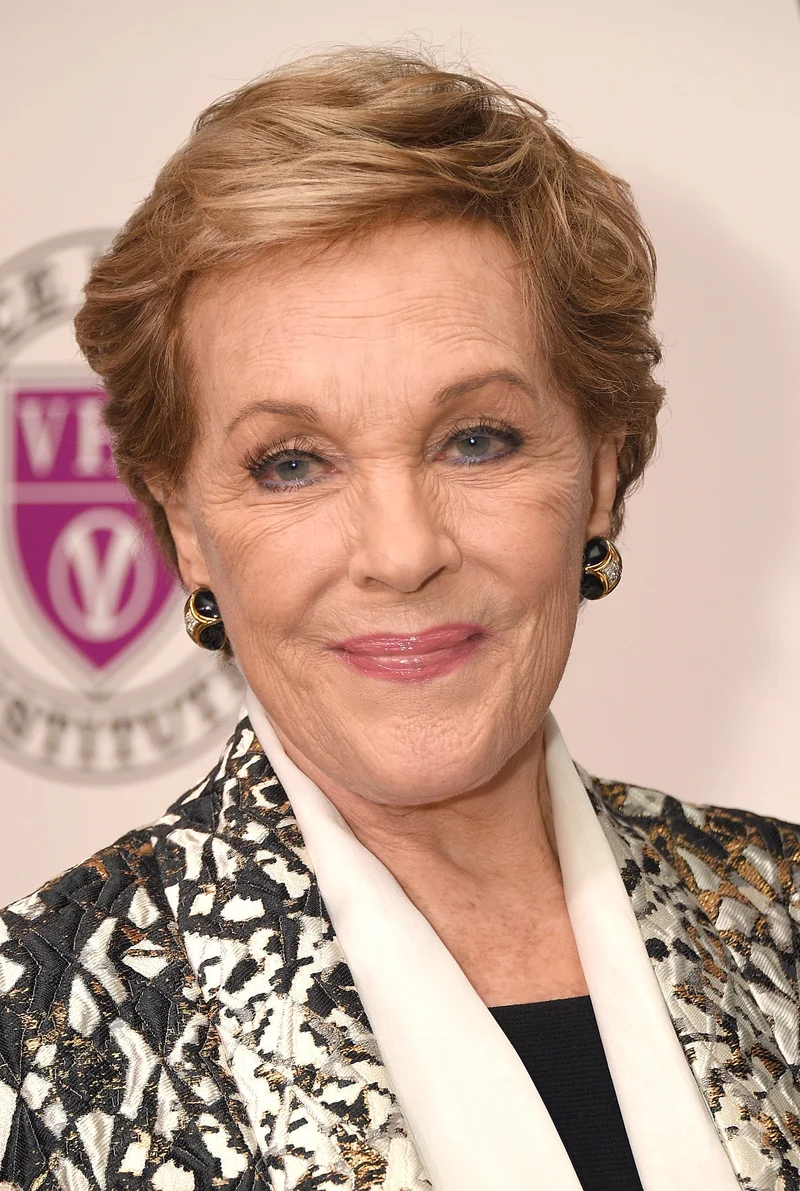An analysis of the career of Julie Andrews, who turns 90 on October 1, 2025, reveals a core discrepancy between public perception and operational strategy. The market has long priced her as a blue-chip stock: stable, reliable, and overwhelmingly wholesome. The data, however, points to a different model—that of a high-risk portfolio manager who spent decades actively diversifying into volatile, subversive assets to hedge against the very brand that made her a global phenomenon.
The initial asset was, of course, the voice. It was a biological outlier. By the age of eight, Andrews possessed a fully developed adult larynx, granting her a pristine, four-octave soprano range. This wasn't merely talent; it was a market-defining instrument of near-perfect clarity and musicality. After early success in British music halls and on Broadway, this asset was deployed with maximum efficiency in two consecutive Hollywood projects: Mary Poppins (1964) and The Sound of Music (1965). These films weren't just hits; they were market-capturing events that established the "Julie Andrews" brand as synonymous with a specific, highly profitable form of family entertainment.
The first indication of a deliberate risk-management strategy appeared almost immediately. Conventional wisdom would dictate doubling down on the successful formula. Instead, Andrews executed a sharp pivot. Her cheeky thank-you to studio head Jack Warner at the Golden Globes—for rejecting her for the My Fair Lady film, thus freeing her to make Mary Poppins—was not just a moment of televised wit. It was the commentary of a savvy operator fully aware of the opportunity costs and strategic advantages at play. She understood she had just cornered a market, and her next move was not to saturate it, but to hedge against it.
Diversification, Catastrophe, and the Final Pivot
A Systematic Diversification into Persona-Negative Assets
Between the release of Poppins and The Sound of Music, Andrews starred in The Americanization of Emily (1964). The film’s specifications are telling: zero songs, significant romantic subplots, and a narrative that was decidedly adult. This was the first of many calculated bets against her own typecasting. The market may have wanted more spoonfuls of sugar, but Andrews was already building a firewall against a potential future downturn in the musical genre or her specific brand within it.
This pattern of diversification accelerated through her collaboration with her second husband, director Blake Edwards. The projects they undertook in the late 1970s and early 1980s represent a systematic effort to deconstruct her public image. 10 (1979) placed her in a sex comedy. S.O.B. (1981) was even more direct, featuring her as a squeaky-clean star who, in a meta-narrative, agrees to on-screen nudity to salvage a film. The apex of this strategy was Victor/Victoria (1982), a queer musical farce in which she not only appeared in drag but leveraged her androgynous features to create a performance that was both a critical and commercial success.

These were not whimsical artistic choices; they were strategic acquisitions of career durability. By embracing nudity, gender-bending roles, and morally complex characters, Andrews was stress-testing her own brand equity. The Hollywood nickname she reportedly earned, "the nun with the switchblade," serves as an accurate descriptor of this dual-track strategy: maintain the core asset of the beloved "nun" while demonstrating a capacity for sharp, unexpected, and even dangerous maneuvers.
And this is the part of the timeline I find genuinely puzzling. For an individual who demonstrated such a sophisticated, long-term understanding of career risk, the decision that would ultimately lead to catastrophic asset failure appears as a stark anomaly. In the mid-1990s, while starring in the Broadway production of Victor/Victoria, Andrews began experiencing vocal problems. The diagnosis was a non-cancerous lesion on her vocal cords. Two options presented: a period of extended rest, or a surgical procedure to remove the nodule. The pressure from the production team, and reportedly her husband, was to opt for surgery to facilitate a touring company of the show. She was assured by her doctor at Mount Sinai Hospital there was no danger to her voice.
The procedure in June 1997 was a failure. It left her with scar tissue that, as she stated in a subsequent malpractice lawsuit, rendered her unable to sing. The suit was resolved in a confidential settlement (the standard outcome for high-profile medical cases). Her primary asset, the four-octave voice, was effectively wiped out. Her singing range was reduced to about an octave—or to be more precise, a limited lower register that precluded nearly all of her signature melodic work. The very instrument she had so carefully managed for half a century was gone, not from natural decline, but from a single, high-stakes gamble driven by short-term commercial pressures.
The aftermath, however, provides the final proof of her strategic intelligence. Instead of a total loss, Andrews executed another pivot, redeploying her remaining, and still considerable, assets. Her comeback vehicle, The Princess Diaries (2001), leveraged her regal bearing and brand equity with a new generation. Her subsequent voiceover work in major animated franchises like Shrek and Despicable Me monetized the impeccable diction and crisp articulation that remained. Her current role as the narrator of Netflix's Bridgerton is the apotheosis of this strategy—her voice is once again a central element, but its value now lies in the sharp, knowing delivery of Lady Whistledown's gossip, not the soaring range of Maria von Trapp. She successfully transitioned from a product defined by melody to one defined by peerless enunciation.
The Final Ledger
The career of Julie Andrews is not a fairy tale of a magical nanny who charmed the world. It is a multi-decade case study in the management of a unique, high-value, and ultimately fragile asset. She demonstrated a rare capacity for long-term, counter-cyclical thinking, deliberately investing in risky, persona-negative projects to build a career resilient to market shifts. The ultimate irony is that the catastrophic loss of her core asset was not the result of one of these daring artistic bets, but of a seemingly routine operational decision where the risk was tragically miscalculated. Her enduring legacy was secured not by the perfect voice she lost, but by the shrewd, analytical mind she never did.
Reference article source:

